| Description | Taxonomy | Distinctions | Age and horns | Wisent’s diet | Books | Articles |
 |
WISENT’S DIET AND EATING BEHAVIOR
Wisents are exclusively herbivorous animals.
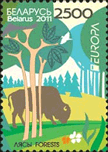
Woody vegetation (leaves, shoots, bark) occupies a significant place in the wisent’s diet.
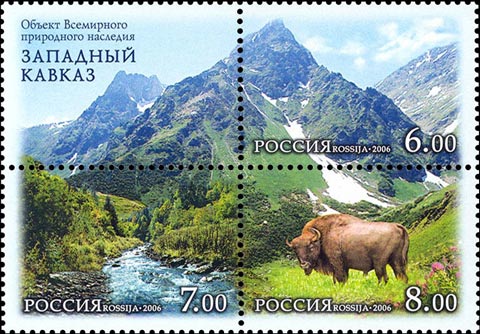 The ability to digest lignin at a higher rate than cattle indicates a specific adaptation of wisent to forest conditions.
The ability to digest lignin at a higher rate than cattle indicates a specific adaptation of wisent to forest conditions.
Set of preferred plants and the food regime of wisent in the Bialowieza Forest and in the Caucasian Reserve are very similar.
The wisent are grazing with alternating the eating and constant transitions.
It ensures a uniform removal of vegetation mass.
They avoid eating of plants which was bitten by other animals recently.
So each animal tends to reach first the untouched pasture area and the plants can be restored for reused.
For the same reason, wisent do not trample pastures and leave pasture path as domestic cattle and american bison.
Detailed studies have shown that wisent eat plants that belong to all the main systematic groups and life forms of higher plants as well as forms of lower plants.
Poisonous plants such as february daphne, false hellebore and aconites also are used into the food.

 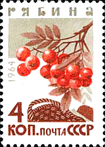 The composition of fodder plants is big and varies by season.
The wisent’s diet in the Polish part of Bialowieza Forest includes 252 species of vascular plants, in the Belorussian part - 347 species.
Wisents of the Caucasus eat more than 325 species of plants.
It is more than 10% of the species noted in the Caucasian Reserve.
The composition of fodder plants is big and varies by season.
The wisent’s diet in the Polish part of Bialowieza Forest includes 252 species of vascular plants, in the Belorussian part - 347 species.
Wisents of the Caucasus eat more than 325 species of plants.
It is more than 10% of the species noted in the Caucasian Reserve.
Contents of woody plants in wisent’s diet changes from several percent in the summer up to 80% in the winter.
Elm and mountain ash are considered to be the favorite species from the tree vegetation.
Willows, aspen, alder and hornbeam willingly will be eaten too.
Less often - maple, ash, fir.
Among of shrubs used in the forage are noted spindle, rose, currant, whortleberry.
A favourite food of wisent is acorn; however, its yield only occurs in the forest every few years and oaks grow not everywhere. |
       |
Wisents eat lichens (Usneo sp.) which grow on branches and fallen trees, and mistletoe - common tree parasite in Europe and the West Caucasus.
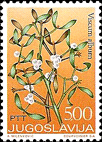
 In winter, unlike typical dendrophages (elks and deer) the wisent consumes many green plants under snow: dewberry shoots (Rubus caesius) and fescue (Festuca sp.).
Wisent obtains the green winter forage pushing the snow by head.
If the snow cover is thick then it rakes snow by hooves at first.
European dewberry is actively consumed not only in winter but also in summer.
In winter, unlike typical dendrophages (elks and deer) the wisent consumes many green plants under snow: dewberry shoots (Rubus caesius) and fescue (Festuca sp.).
Wisent obtains the green winter forage pushing the snow by head.
If the snow cover is thick then it rakes snow by hooves at first.
European dewberry is actively consumed not only in winter but also in summer.
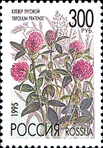 In summer, the importance of grass increases in comparison with tree and shrub species.
The main food is large herbs such as forbs, graminoids and legumes, as well as leaves of trees and shrubs.
In summer, the importance of grass increases in comparison with tree and shrub species.
The main food is large herbs such as forbs, graminoids and legumes, as well as leaves of trees and shrubs.
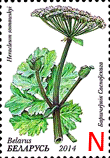 Wisent eat from tall grass: hogweed, coocksfoot, tall oatgrass, bluegrass and reedgrass.
Unlike spring, plants is not used as a whole on the tall grass, but more nutritious parts will be selected (tips and leaves).
Wisent eat from tall grass: hogweed, coocksfoot, tall oatgrass, bluegrass and reedgrass.
Unlike spring, plants is not used as a whole on the tall grass, but more nutritious parts will be selected (tips and leaves).
Wisent living in anthropogenic landscapes (as in Lithuania) feed mostly on grass and agricultural crops.
Average consumption of green forage by an adult wisent is 30 to 45 kg per day.
It is on 10-15 kg less than the daily intake of cattle.
However in addition to herbaceous vegetation they also use 1 to 3 kg of wood feed (bark and branches with leaves).
Calves up to 1 year of age eat 8.5 kg of fresh food every day, the young (2–3 years old) 19.5–28.5 kg.
In summer, the intensity of feeding activity of wisent is almost two times lower than in spring and winter.
On average, they graze for about 5 hours.
By the end of summer, with the deterioration of the food base, grazing occupies almost the entire light-day.
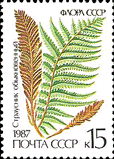
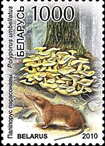 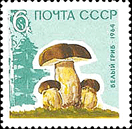 The influence of wisent almost does not affect the floristic diversity.
Of the herbaceous plants ferns may suffer.
They are reduced in numbers and give way to other plant species under intensive eating.
Juvenile elm and hornbeam the most intensely damaged among tree plants.
Adult bulls often bring down aspens and firs up to 8 m in height, not being satisfied with small undergrowth, and eat bark, shoots and leaves of the crown.
The influence of wisent almost does not affect the floristic diversity.
Of the herbaceous plants ferns may suffer.
They are reduced in numbers and give way to other plant species under intensive eating.
Juvenile elm and hornbeam the most intensely damaged among tree plants.
Adult bulls often bring down aspens and firs up to 8 m in height, not being satisfied with small undergrowth, and eat bark, shoots and leaves of the crown.
Among the wisent eating mushrooms are penny bun and polypores.
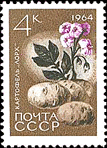
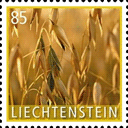 All free-ranging herds, large and small, have been traditionally fed with hay in winter since their formation.
Winter supplementary feeding (hay, root crops and corn) limits natural mortality of wisent, but at the same time leads to a few-months concentration around the feeding places,
All free-ranging herds, large and small, have been traditionally fed with hay in winter since their formation.
Winter supplementary feeding (hay, root crops and corn) limits natural mortality of wisent, but at the same time leads to a few-months concentration around the feeding places,
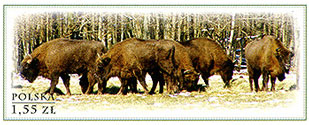 which may be cause of violations of social and forage behavior.
In the Bialowieza Forest where the wisent has constantly supplementary feeding, they eat relatively little of trees and shrubs. which may be cause of violations of social and forage behavior.
In the Bialowieza Forest where the wisent has constantly supplementary feeding, they eat relatively little of trees and shrubs. |
 |
Postage stamps:
Belarus (2010.08.18, Mi 832) - Umbrella polypore (Polyporus umbellatus)
Belarus (2014.07.25, Mi 1022) - Sosnowsky's hogweed (Heracleum sosnowskyi)
Hungary (2016.09.08, Mi 5866) - Field elm (Ulmus minor)
Jugoslavia (1973.05.25, Mi 1514) - European mistletoe (Viscum album)
Lichtenstein (2017.03.06, Mi 1847) - Oats (Avena sativa)
Monako (1996.10.14, Mi 2323-2326) - European dewberry (Rubus caesius)
Poland (1962.08.08, Mi 1331) - February daphne (Daphne mezereum)
Russia (1995.05.18, Mi 437) - Red clover (Trifolium pratense)
Ukraina (2012.01.14, Mi 1214) - Common ash (Fraxinus excelsior)
Ukraina (2012.01.14, Mi 1218) - Common oak (Quercus robur)
Ukraina (2012.01.14, Mi 1219) - Norway maple (Acer platanoides)
Ukraina (2015.11.19, Mi 1521) - European spindle (Euonymus europaeus)
Ukraina (2012.01.14, Mi 1222) - Grey alder (Alnus incana)
Ukraina (2012.01.14, Mi 1224) - Aspen (Populus tremula)
Ukraina (2012.07.25, Mi 1254) - White willow (Salix alba)
USSR (1964.07.10, Mi 2924A) - Potatoes (Solanum tuberosum)
USSR (1964.11.25, Mi 2985) - Penny bun (Boletus edulis)
USSR (1964.12.25, Mi 2998) - Mountain-ash (Sorbus aucuparia)
USSR (1987.07.02, Mi 5732) - Ostrich fern (Matteuccia struthiopteris) |
 |
- Жизнь животных, том 6. Млекопитающие или звери (под ред. Наумова С. П. и Кузякина А. П.). М.: Просвещение. 1971.
- Зубр. Морфология, систематика, эволюция, экология. Соколов В. Е. (отв. редактор). М.: Наука, 1979.
- Немцев А. С., Раутиан Г. С., Пузаченко А. Ю., Сипко Т. П., Калабушкин Б. А., Мироненко И. В. Зубр на Кавказе. Москва-Майкоп: «Качество», 2003.
- Перерва В. И. Возвращение зубра.- М.: Колос, 1992.
- Шевченко Н. Е. Роль Bison bonasus (Linnaeus, 1758) в формировании мозаики природного лесного покрова Восточной Европы. Сообщение первое. // Russian journal of ecosistem ecology. Vol. 1(2), 2016.
- Pucek, Z. (ed.); Pucek, Z., Belousova, I.P., Krasinska, M., Krasinski, Z.A. and Olech, W. (comps.). 2004. European Bison. Status Survey and Conservation Action Plan. IUCN/SSC Bison Specialist Group. IUCN, Gland, Switzerland and Cambridge, UK.
|
|












 The composition of fodder plants is big and varies by season.
The wisent’s diet in the Polish part of Bialowieza Forest includes 252 species of vascular plants, in the Belorussian part - 347 species.
Wisents of the Caucasus eat more than 325 species of plants.
It is more than 10% of the species noted in the Caucasian Reserve.
The composition of fodder plants is big and varies by season.
The wisent’s diet in the Polish part of Bialowieza Forest includes 252 species of vascular plants, in the Belorussian part - 347 species.
Wisents of the Caucasus eat more than 325 species of plants.
It is more than 10% of the species noted in the Caucasian Reserve. In winter, unlike typical dendrophages (elks and deer) the wisent consumes many green plants under snow: dewberry shoots (Rubus caesius) and fescue (Festuca sp.).
Wisent obtains the green winter forage pushing the snow by head.
If the snow cover is thick then it rakes snow by hooves at first.
European dewberry is actively consumed not only in winter but also in summer.
In winter, unlike typical dendrophages (elks and deer) the wisent consumes many green plants under snow: dewberry shoots (Rubus caesius) and fescue (Festuca sp.).
Wisent obtains the green winter forage pushing the snow by head.
If the snow cover is thick then it rakes snow by hooves at first.
European dewberry is actively consumed not only in winter but also in summer. In summer, the importance of grass increases in comparison with tree and shrub species.
The main food is large herbs such as forbs, graminoids and legumes, as well as leaves of trees and shrubs.
In summer, the importance of grass increases in comparison with tree and shrub species.
The main food is large herbs such as forbs, graminoids and legumes, as well as leaves of trees and shrubs.
 Wisent eat from tall grass: hogweed, coocksfoot, tall oatgrass, bluegrass and reedgrass.
Unlike spring, plants is not used as a whole on the tall grass, but more nutritious parts will be selected (tips and leaves).
Wisent eat from tall grass: hogweed, coocksfoot, tall oatgrass, bluegrass and reedgrass.
Unlike spring, plants is not used as a whole on the tall grass, but more nutritious parts will be selected (tips and leaves).

 The influence of wisent almost does not affect the floristic diversity.
Of the herbaceous plants ferns may suffer.
They are reduced in numbers and give way to other plant species under intensive eating.
Juvenile elm and hornbeam the most intensely damaged among tree plants.
Adult bulls often bring down aspens and firs up to 8 m in height, not being satisfied with small undergrowth, and eat bark, shoots and leaves of the crown.
The influence of wisent almost does not affect the floristic diversity.
Of the herbaceous plants ferns may suffer.
They are reduced in numbers and give way to other plant species under intensive eating.
Juvenile elm and hornbeam the most intensely damaged among tree plants.
Adult bulls often bring down aspens and firs up to 8 m in height, not being satisfied with small undergrowth, and eat bark, shoots and leaves of the crown.
 All free-ranging herds, large and small, have been traditionally fed with hay in winter since their formation.
Winter supplementary feeding (hay, root crops and corn) limits natural mortality of wisent, but at the same time leads to a few-months concentration around the feeding places,
All free-ranging herds, large and small, have been traditionally fed with hay in winter since their formation.
Winter supplementary feeding (hay, root crops and corn) limits natural mortality of wisent, but at the same time leads to a few-months concentration around the feeding places,
